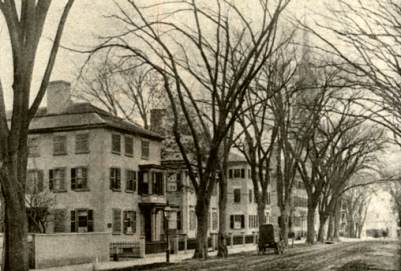McIntire Historic District

Chestnut Street from Botts Court North Side
Photograph courtesy of the Peabody Essex Museum
Established in 1981, this district incorporates two previously established districts, the Chestnut Street Historic District (1971) and the Federal Street Area Historic District (1976), with the addition of some 249 structures on upper Essex, Broad, and Warren Streets, Dalton Parkway, and various cross and side streets in between.
The district is named for Salem's celebrated architect-carver, Samuel McIntire, who lived at 31 Summer Street. His first major commission, the Peirce-Nichols House (1782), and several of his mature works including Hamilton Hall (1805), are among the buildings preserved within the district.
This densely settled residential area of the city contains one of the greatest concentrations of notable pre-1900 domestic structures extant in the U.S. With few exceptions, the major architectural styles common to the region during the 1640-1940 period are represented. Of particular interest are the numerous Federal Era townhouses lining Chestnut Street. Collectively, they stand as a monument to the mercantile and maritime ascendancy of Salem in the latter 18th and early 19th centuries and constitute one of the most beautiful streetscapes in America.
The district also includes three churches, the Broad Street Burial Ground (1655) and Friends' Cemetery, several monuments, and the first Salem State Normal School Building (1854).
